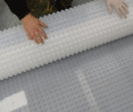Flooding in your home can cause severe damage, affecting carpets, furniture, and even the structure itself, including walls, floors (timber or concrete), and bricks. Proper handling in the event of a flood is crucial to prevent long-term issues.
It’s also worthy to note that there are numerous different types of floods and not all are mass-scale natural disasters that devastate entire areas, some are as simple as a burst pipe or leaking washing machine, so not all of the below pointers are going to be relevant so please bear this in mind.
Follow these steps to effectively deal with flood damage and protect your home from lasting harm.
What to do Before a Flood – Preparation
If you know that you are in a flood risk area and you have been informed that there is a flood imminent then there are certain steps that you can take to help mitigate and minimise any risk to yourself and family and also damage to your property and personal belongings.
Work through the following points to help reduce any risk and damage, but only if it is safe to do so:
- Move any vehicles to high ground out of the way of potential damage
- Find out details about any local authority/emergency service evacuation plans and shelters
- Make an evacuation plan for your family
- Move any pets to a safe location where they will be safe and cared for
- Remove and safely store any important documents and valuables
- Move any furniture to a first floor or out of the property. At minimum, put up on stilts or the likes
- Clear any drains or gutters so that water has a chance to drain as quickly as possible
- Pack any items you will need to survive – warm clothes, food, water etc.
- Ensure clear, easy access from your property to a safe location, free from any obstacles
- Keep up to date with what’s going on at all times by monitoring local news channels, radio, weather, social media and the likes
- Keep any phones fully charged and also fully charged power packs for backup power
- Ensure you are ready to act at a moments notice
- Have all of your insurance documents and utility contact numbers, contracts, paperwork etc. to hand
- Contact your local authority for information on what they are planning
- If you are in a rental property, contact your landlord and inform them of what is going on as they will need to handle the insurance etc.
- Use sandbags or other means to block up and any all doorways to try and prevent as much water getting in as possible
- If you live in a high flood risk area, self-filling sandbags are a great way to future-proof your property. These bags store flat and dry, and when needed, simply wet them. The gel inside automatically expands to fill the bag, providing instant flood protection
What to do First in the Event of a Flood?
In the event that you and your property are subjected to a flood, it is essential that you act quickly and promptly to minimise the risk to yourself, your family and also to the property itself.
As everyone’s domestic situation is slightly different, you may have your own specific requirements and or steps that need to be added below, but on the whole, pretty much all situations will require the following core items.
- 1. Personal Safety: The safety of you and your family is top priority, so move yourself, your family, and pets to higher ground immediately in the event of a flood, or if advised by authorities, before any flooding occurs.
- 2. Turn Off Utilities: If you know flooding is imminent but has not yet occurred, switch off the electricity, gas, and water supply if it is safe to do so at source e.g. consumer unit, stopcock incoming gas main etc. If it’s already flooded and you can access your individual incoming mains isolation, turn each off, however if you can’t (especially the electricity) don’t try it. If any water is already electrified and you stand it it, you could get electrocuted! Call each of your utility providers (electric, water, gas etc.) and inform them of the flooding and they should advise as to what to do next.
- 3. Contact Emergency Services: If you and your family are trapped or are in immediate danger or need assistance, call the emergency services right away. The Fire Service are normally the go-to service and you could also try Floodline on: 0345 988 1188. Both will advise on what to do and they can also provide guidance on evacuation routes or shelter locations.
- 4. Avoid Floodwater: Keep yourself and family out of any floodwater as, not only could it be electrified (as stated above) it could also be contaminated with sewage, chemicals or other debris that can cause injury. Even shallow water can pose a significant risks. If you can get out fine, do so and get to higher ground, if not, contact emergency services (above) and they will advise.
- 5. Notify Your Insurance Company: One of the most important jobs after you and your family are safe is to contact your home insurance provider, this should be done as soon as possible. Provide them with details and any initial documentation you have, such as initial photos of the damage.
- 6. Document the Damage: Once all utilities are isolated and the emergency services have advised that you can access your property, do a thorough walk-through and take as many photos and videos of the damage and affected areas as possible. This should be done both internally and externally. Do not touch or move any items until you have done so. Also mark the water height on walls so you can see how high it was. This evidence will be key for any insurance claims.
Entering Your Property
As we have touched on above, if your home has flooded, the temptation to dive right in and start saving your valuables and getting any water out is without a doubt overwhelming, however it is certainly something that you should not do until you know 100% that it is safe to do so.
This will be when any emergency services have stated the property is safe to enter and when all utilities (electricity, water, gas etc.) have been isolated.
As a summary, when entering a flood damaged property, adhere to the following points:
- Seek advice from emergency services to ensure property safe to enter before actually going in
- Check with utilities providers, particularly electricity, that all utilities are isolated
- If available and if able, ask fire service to pump property out, removing all standing water (this will only be possible if root cause of flood has been resolved)
- Wear old clothes and wellies
- Where able, mark tide/water heights on walls to indicate where floor water level was
- Take pictures/videos of everything, including all damage to property and possessions
- Move any undamaged items up high or up to a first floor away from any further damage risk
- If you have any important documents or paperwork, property deeds, passports, birth certificates etc., valuables (jewellery, cash etc.) ensure you rescue these as soon as possible
- Claim any items you will need such as unspoiled food, personal hygiene items, clothes, shoes etc.
- Don’t be tempted to drink any tap water until it has been certified clean – floods can cause chemicals, sewage and the likes to spill into domestic water supplies contaminating them
What to do After a Flood – Damage Repair
If you have been unlucky enough to suffer a flood then after all the initial points have been covered above, you and your family are safe, your insurance has been told and advised on what you should do, emergency services have said the property is safe to enter etc. the big work now starts in terms of cleaning up and repairing damage, ready for you to move back in.
- Clear any drains and air bricks (for timber floors) by rinsing out debris with fresh water. If sewage is present, thoroughly clean and disinfect floors and walls to prevent contamination. This may need to be done numerous times to be sure
- Hire dehumidifiers and large fans to move air and remove moisture and close all doors and windows in damp areas. Use a humidity meter to track moisture levels. Keep any dehumidifiers running until the relative humidity drops below 60% and all floors/walls are totally dry.
- Track any dehumidifier’s water output daily to monitor progress using a chart. A significant drop in collected water indicates most excess moisture has been removed, which may take several weeks or even months.
- Use a hygrometer to measure humidity levels in each room, helping you gauge moisture content accurately.
- Thoroughly disinfect walls and floors with a suitable sterilising solution to eliminate any remaining bacteria and viruses from sewage, preventing future contamination and health risks.
- As well as your floors, regularly check moisture levels in walls and timbers using an electrical damp meter. Aim for timber readings below 18% and masonry below 2%. Be aware that salt contamination may cause higher readings. see our project on efflorescence for more details.
- Ensure walls and floors are fully dry before starting any interior redecoration, however sometimes this isn’t always possible so if not, consider using a tanking product to seal damp areas. However, consult an expert first, as sealing in moisture can lead to serious problems in the future.
- Replaster walls using a sand and cement render with added salt inhibitor and waterproofer to prevent salt damage. A product like Renderproof can be mixed in to act as a salt inhibitor, plasticiser, and waterproofer. Learn more about re-plastering here. Also note any and all damp plaster should be removed first back to the walls surface before anything is plastered.
- For older walls, consider using a plastic lining membrane instead of sand and cement. These membranes are easy to install, waterproof, and can be plastered or boarded right away. They improve wall warmth, offer insulation, and prevent damp or salts from damaging decorations. To stop salts from resurfacing, treat walls with a salt neutraliser before plastering or lining. Again, always consult with a damp proofing professional before doing anything.
- Timbers can be damaged by fungi and insects, especially when they have been subjected to water damage. Ensure timbers are dry (below 18%), then treat with a quality fungicidal wash and apply a suitable wood preserver for full protection.
- To detect dry rot, use test sticks in vulnerable walls and timbers. These sticks change colour from blue to yellow when rot is present. Learn more about Dry Rot Test Sticks here.
- If timbers are damaged but not beyond repair, you can fix them without replacing the entire beam or joist. Simply support the load, cut off the damaged section, and splice in a new section using a timber resin splice kit. Learn more in our repairing structural timbers project.
- To prevent mould, keep humidity below 60%. Use a damp test meter or hygrometer to monitor moisture levels in timbers and walls.
- If timber floors are affected, lift the boards, clean the void, and ensure air brick holes are clear. When using a dehumidifier, leave some boards up and cover air bricks to focus on the affected areas.
- Once any and all repairs have been carried out it’s essential that you perform ongoing monitoring of condensation levels using damp testers and condensation test strips. Simply place the strips on the coldest walls, and they will change colour when condensation is present.

Damp test meters can be used to check the moisture content in walls

Hygrometer humidity meters monitor the moisture content in the air

Mesh Membrane – it provides a dry decorative surface fast for plaster or plasterboard

Air Gap Membrane – cover damp or salty areas, before lining or plasterboarding
Suffering from a major flood in your property is a heart-wrenching experience and one that no one should ever experience, however if you do, ensure that you take note and follow all of the above tips and you’re sure to keep the stress and hassle to as minimum as possible.

